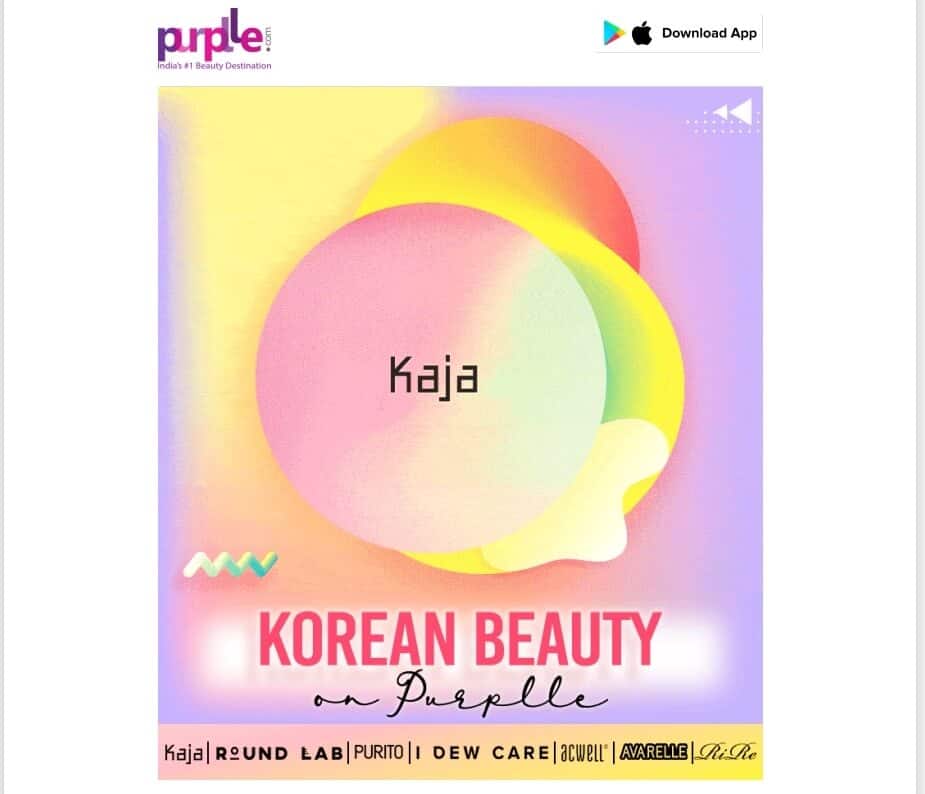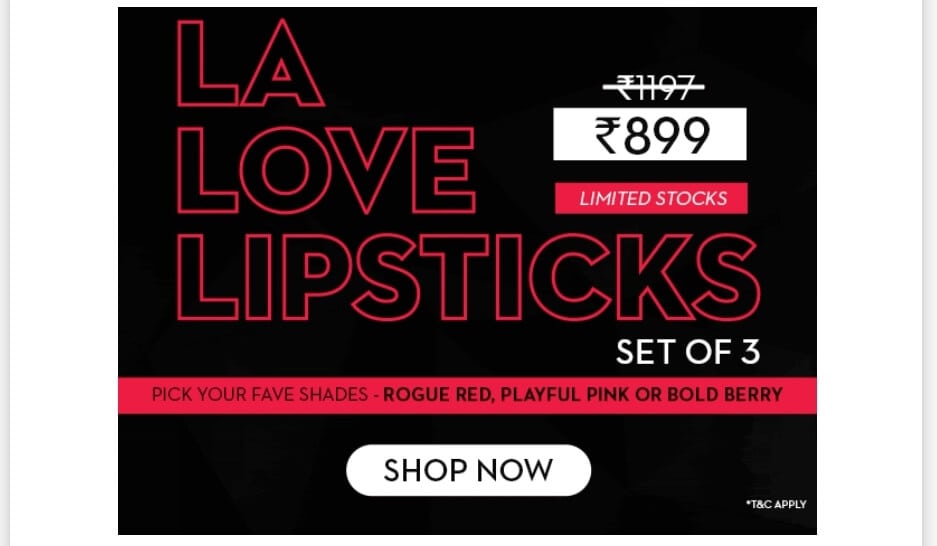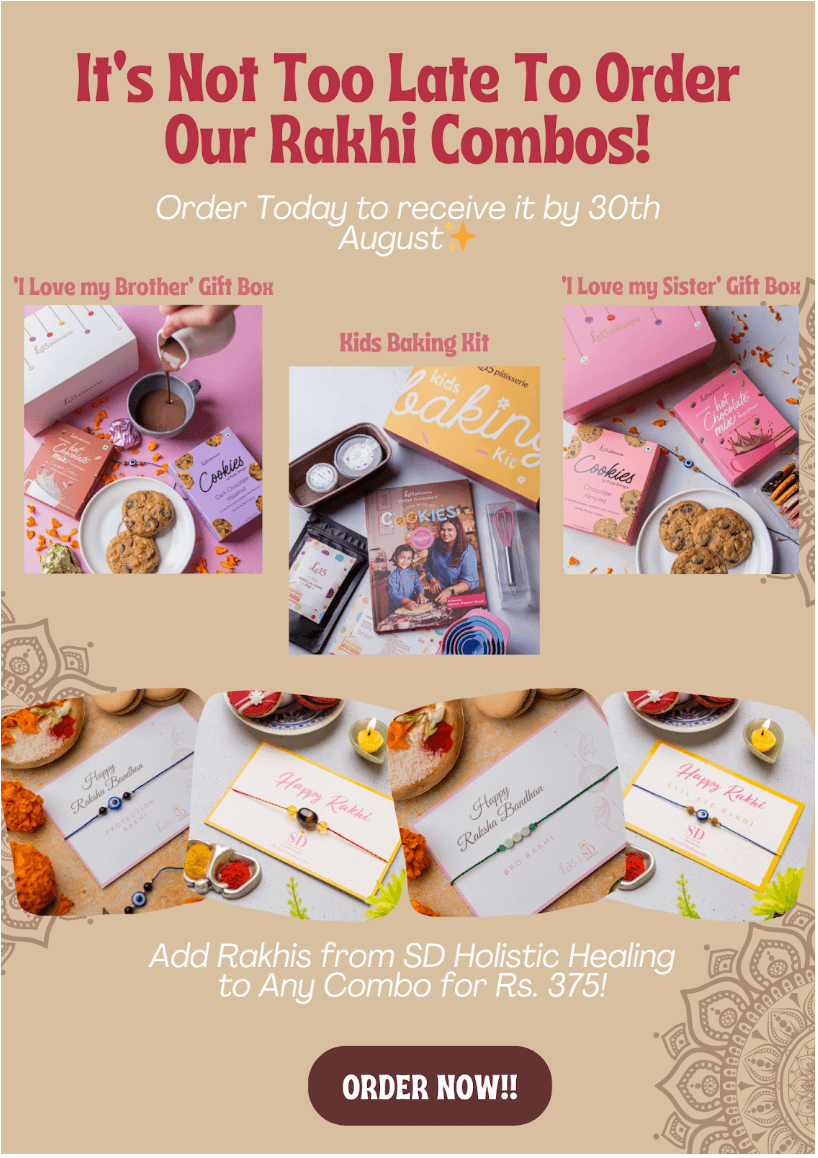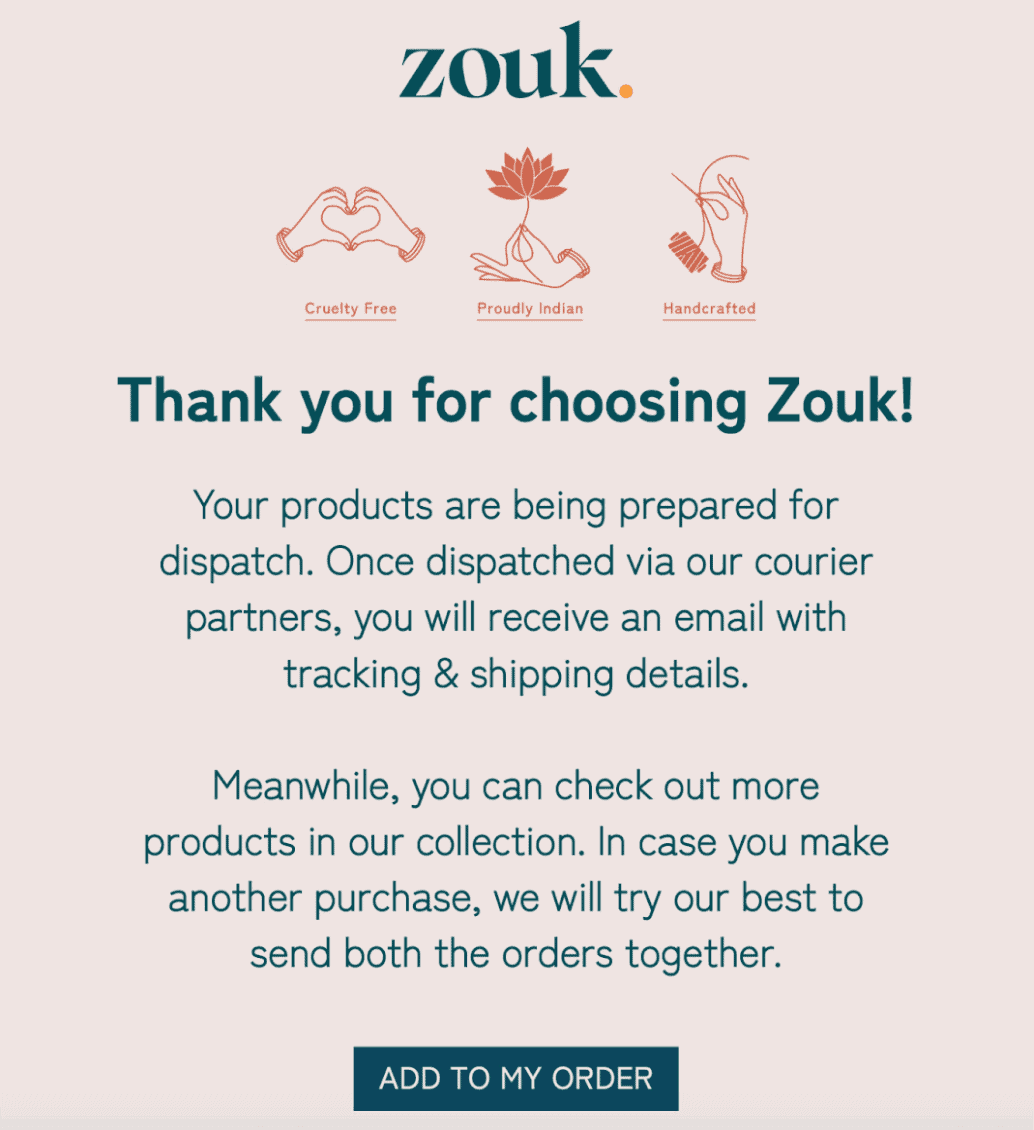With countless products vying for attention and an ever-growing wishlist, it’s easy for customers today to feel like a kid in a candy store (albeit a virtual one). This sometimes meddles with their shopping experience as they can’t decide what to buy.
This is where eCommerce brands can act like a digital wizard and pull a trick up their sleeves to make their shopping experience smoother and more tailored to their taste buds – enter eCommerce product recommendation emails!
It’s not a new trick – a staggering 77% of online shoppers have made a purchase based on personalized product recommendations. However, you must do it right to yield its maximum benefits.
In this guide blog post, we will master the art of eCommerce product recommendation emails. From sharing some great email examples to practical tips on crafting killer email content, I have got it all covered.
Table of Contents
What Are eCommerce Product Recommendation Emails?
We are bombarded with a constant stream of marketing emails on a daily basis. Amidst the clutter, what sets eCommerce product recommendation emails apart is their ability to cut through the noise and deliver value straight to the inbox.
Such emails bridge the gap between the convenience of online shopping and the personalized attention you receive in a physical store. They are strategically crafted using data-driven insights.
Product recommendation emails are personalized emails sent to customers based on their past shopping behaviors, preferences, and browsing history. These emails suggest products that are tailored to each individual’s interests, increasing the likelihood of making a purchase.
👉 Elevate your email marketing with our free email templates designed to boost engagement.
Why Are eCommerce Product Recommendation Emails Important?
Using product recommendation emails, brands can recommend the products and services that their customers would be most interested in, which can, in turn, boost sales.
Did you know that 59% of customers said marketing emails influenced their purchase decisions? Further, over 56% of customers will likely return to websites that send personalized product recommendation emails.
Let’s break down the key reasons why these emails are a must-have in your marketing arsenal.
#1. Boost conversion rates
By showcasing products similar to what your customers have shown interest in, you reignite their desire to buy.
These emails have the potential to increase click-through rates by a whopping 300%. That’s right, those abandoned carts could easily turn into revenue.
#2. Increase average order value
Whether they are discovering complementary items or stumbling upon hidden gems, product recommendation emails make the buying process smoother and more enjoyable.
This helps boost the average order value since customers are being persuaded to buy products and services that they might not have planned for.
#3. Maximize customer lifetime value
Product recommendation emails are crucial in nurturing relationships with your existing customers.
By consistently delivering relevant product suggestions, you stay top-of-mind even when customers aren’t actively shopping.
This steady engagement boosts customer loyalty and increases lifetime value, turning them into repeat buyers and brand advocates.
#4. Build trust and credibility
Recommendations that are personalized and tailored to the customer’s needs lead to greater trust and credibility among consumers regarding the brand.
This personalization creates a one-on-one connection and shows that the brand is committed to its clientele and invests in technology to understand them as individuals better.
#5. Streamline product discovery
eCommerce brands can save time for their customers by providing links to products and services within the email itself.
This way, buyers can simply click on the product image and be directed to the eCommerce website or app rather than manually searching for the product name on the web.
It not only saves time but also makes product search and discovery easier.
Read also: 5 eCommerce Email Personalization Strategies [+ Examples]
Enhance Your Email Marketing
Want to make your emails more impactful? Check out our beautiful, easy-to-customize recruitment and email templates. Designed to boost engagement, these templates from EngageBay will help your emails stand out. Just customize the images, headings, and CTAs for your brand, and hit send in a few minutes!
Inspiring Product Recommendation Email Examples
What do eCommerce product recommendation emails look like? Below are some common ways eCommerce brands can infuse product recommendations into their emails for better conversions.
Promotional emails
Subject line example: “X% Off: Special Offer Just for You 🎁”
Who doesn’t love a good deal? Promotional emails combined with personalized product recommendations are a match made in marketing heaven.
When a customer receives an email that showcases an ongoing sale with product suggestions, it increases the chance of conversions. For instance, if a customer bought a camera, the email could recommend accessories like lenses, tripods, or camera bags.
This approach not only entices customers with discounts but also introduces them to products they might have overlooked. In the example below, Purplle is promoting its newly launched Korean skincare brands.
The email starts with a gif displaying all the products they are launching, followed by a small message and discount offer. Further down, the email lists four special products describing what makes them a good buy.
And it ends with an emphasis on the limited-time offer – valid for only 7 days!
Key takeaways
- Include compelling visuals that showcase the discounted products in action
- Highlight exclusive discounts and promotional codes on recommended products
- Utilize persuasive language that emphasizes the limited-time nature of the offer
Limited availability emails
Subject line example: “Hurry, Before They’re Gone!🏃”
Fear of Missing Out, or FOMO, is a powerful tool. Limited availability emails leverage this psychology to create a sense of urgency.
By recommending products with limited stock or exclusive releases, you tap into customers’ desire to grab something unique before it’s gone. This approach helps drive immediate action, resulting in quicker conversions.
Here’s a classic product recommendation email example of Sugar Cosmetics on limited available products.
While the email didn’t mention the time period, it clearly highlights ‘Limited Stock.’ It also gives a discount to entice users further to choose their favorite lip colors and make their own set.
Besides, the visuals do a great job telling its audience why you should care about this product and buy it before it runs out. The theme of the lipstick matches well with the graphics.
Key takeaways
- Create a sense of urgency by emphasizing limited stock availability
- Showcase trending or popular products that are selling out quickly or have limited stock
- Incorporate features that might entice users to buy that product
Seasonal products recommendation emails
Subject line example: “Shop Your <Festive Name> Gift At X% Off!”
Embrace the changing seasons and holidays with seasonal product recommendations. Whether it’s summer, winter, or the festive season, tailor your email content to showcase products that align with the theme.
For instance, you could recommend cozy sweaters, warm accessories, and holiday-themed items during the year-end holiday season. By tapping into the emotional and buying trends associated with each season, you create a more relevant and compelling shopping experience.
Such product recommendation emails typically offer combos to increase average order value and boost sales. Here’s a great eCommerce product recommendation email example from Le15 Patisserie – a well-known bakery in Mumbai, India.
Le15 Patisserie is offering gift combos for the occasion of Rakhi. It caters to various audiences – brothers buying gifts for their sisters or vice versa and kids.
It induces urgency by asking customers to place the order today if they want it delivered on time. Besides, the high-quality images make this email stand out. Customers can simply click on any of these images or the ‘Order Now’ button at the bottom to place their order.
Moreover, the brand allows you to buy a combo of gifts and rakhis at just INR 375 – making it a hard-to-resist offer.
Key takeaways
- Curate a collection of products that are relevant to seasonal trends and activities
- Use thematic visuals and colors that evoke the spirit of the season
- Offer bundled deals or packages to encourage multiple purchases
Order confirmation emails
Subject line example: “Order Confirmed & More! Check out Complementary Products. 🛍️”
The transaction isn’t over after the checkout – it’s a chance to engage with your customers further. Order confirmation emails can double as a platform for product recommendations.
By suggesting related products based on what the customer just bought, you increase the chances of upselling and cross-selling. For instance, recommend phone cases or wireless chargers if they have purchased a smartphone.
Here’s an order confirmation email example from Zouk – a popular brand known for making vegan handbags.
As an eCommerce brand that focuses on making vegan products, it does a great job of highlighting its USP at the start of the email.
After confirming the order received, it adds a little tweak to it. Instead of simply recommending specific products, it asks its customers to check out more products and get them delivered with the previous order itself.
The convenience of adding recommended items to the existing order can encourage more sales.
Key takeaways
- Include product recommendations in post-purchase confirmation emails
- Suggest items that enhance or complement the customer’s recent purchase
- Reinforce the convenience of adding recommended items to their existing order
Personalized newsletters
Subject line example: “Your Monthly Style Guide Is Here! 💃”
Newsletters aren’t just for sharing updates; brands use them as a prime channel for tailored product recommendations.
Leverage the data you have on your subscribers to curate content that resonates with their preferences. Highlight new arrivals, bestsellers, or items that align with their past interactions.
By consistently delivering personalized content, you reinforce the sense that your brand truly understands their needs. For instance, Nykaa Fashion, a popular eCommerce fashion retailer in India, sends email newsletters to its customers at regular intervals.
The email opens with a small message on what they can expect from this newsletter. It goes on to recommend products and display discounted prices to draw attention.
Not only that, but it also subtly mentions a style tip as a bonus. Further down, it shows various categories, and one click on the images of the outfit leads to the brand’s website to place their orders.
Key takeaways
- Send personalized newsletters that showcase a variety of product categories
- Segment your audience based on preferences, past purchases, or browsing history
- Provide content beyond product recommendations, such as styling tips or industry insights
Read also: eCommerce Transactional Email Optimization: Do’s & Don’ts
Best Practices To Follow While Creating Product Recommendation Emails
How do you create product recommendation emails that increase engagement and revenue?
Below is a list of a few best practices you should follow while creating eCommerce product recommendation emails.
Use marketing automation tools
To improve your eCommerce email marketing, marketing automation tools come in handy. There are various marketing automation platforms that provide features to help enhance your email marketing campaign.
Using them, you can automate and schedule sending product recommendation emails, test email content and subject lines, access pre-built templates, and access buyer history to personalize emails as per their needs.
Some of the most well-known email marketing software include EngageBay, HubSpot, Mailchimp, ActiveCampaign, and more.
Segment your audience
Before you draft a product recommendation email, it is crucial to know who your target audience is. The same products and services cannot be recommended to all your customers.
Using email marketing automation software, you can segment your subscriber list based on factors like past purchases, browsing history, and demographics. By tailoring your recommendations to each segment’s preferences and behaviors, you will increase the chances of resonating with your audience and driving higher conversions.
👉 Boost your marketing strategy with our customizable email templates that drive results.
Prioritize personalization
Personalization is your golden ticket to engagement. Use your customer data to craft recommendations that feel like they were handpicked for each individual.
Address them by their name and reference past purchases. Basically, make them feel like you are their shopping assistant. Studies show that personalized emails generate up to 6x higher transaction rates than generic ones.
Use high-quality images
While creating eCommerce product recommendation emails, use high-quality images to showcase the recommended products. A picture is worth a thousand words.
Visuals help customers envision themselves using the product, making it more enticing and increasing the likelihood of a purchase. The image size shouldn’t be too large but should have a high resolution, load easily, and be eye-catching so that the user knows what different items look like.
Read also: The Art of eCommerce Post-Purchase Emails [A Guide]
Blend recommendations seamlessly
While the goal is to drive sales, your email should read like a helpful suggestion rather than a sales pitch.
Blend your recommendations seamlessly within the email content and provide context for each suggestion. Explain why a certain product is recommended and how it complements the customer’s preferences or previous purchases.
Include social proof
Social proof is a great tool to build trust and increase sales. Statistics have shown that 75% of customers search for product reviews and testimonials before making a purchase.
Including social proof in your product recommendation emails reinforces trust among clients that your brand is credible. Thus, incorporate social proof elements like customer reviews, ratings, or testimonials for the recommended products.
👉 Optimize your marketing efforts with our email templates designed for efficiency and impact.
Add clear CTAs
Your Call to Action (CTA) buttons should be crystal clear and compelling. Use action-oriented language that encourages subscribers to take the next step, whether it’s exploring a collection, adding to the cart, or making a purchase.
Start strong with the subject line
Craft compelling subject lines that give recipients a glimpse of the value inside the email. Hint at the personalized recommendations waiting for them, piquing their curiosity and enticing them to open the email.
Read also: eCommerce Welcome Emails: Dazzle, Delight, Convert
Wrap Up
In the world of eCommerce, where competition is fierce and attention spans are short, product recommendation emails are a valuable tool to engage customers and drive sales.
eCommerce product recommendation emails make the buying process easier for customers since they can get instant access to a range of products and services personalized to their needs over email. This saves time since buyers don’t need to spend hours browsing eCommerce websites to place orders.
As an eCommerce brand, you can experiment with different elements of your product recommendation emails – from subject lines to layout to the wording of recommendations. These steps will help you understand what resonates best with your audience, enabling you to refine your approach over time.
So, get ready to craft emails that inspire action and leave a lasting impression!
👉 Have you tried our email templates? Share your experience in the comments below, and let us know how they worked for your campaigns!












